Hire cart - {{ cart.TotalQuantity }} item{{ (cart.TotalQuantity != 1 ? 's' : '') }}
Cart is empty. Add gear you want to your hire cart and review them here.
There are no branches matching your search.
Login to view or create favourites and other benefits.
Register to start speeding up your hire process and keep track of your hire history.
Nice to see you again. We've made a few changes since you were last here.
Pick a colour
Favourites ({{ userFavourites.length }})
Add your frequently hired items to easily view and hire them again.
Keep your contact information with us up to date so you get the latest and best rates with us.
Hire cart - {{ cart.TotalQuantity }} item{{ (cart.TotalQuantity != 1 ? 's' : '') }}
Cart is empty. Add gear you want to your hire cart and review them here.

A full green lawn is what every homeowner aspires to have, so we’ve created a guide on exactly how to get it, whether you are patching or completing a full lawn renovation.
Getting your lawn into great shape takes maintenance and doing the right jobs at the right time of year.
Hiring gear is a great way to tackle seasonal lawn jobs, so you can spend more time entertaining and showing off your hard work, without hoarding expensive gear that only get’s used a couple times a year. Hirepool has a full range of lawn gear ready to go when you need it, to help you get the job done smarter.
This guide will cover how to re-seed your lawn and complete a full lawn renovation, plus we’ll give you some top insider tips from our friends at NZ Lawn Addicts.
In this guide:
What does re-seeding a lawn mean?
Why you should reseed or overseed your lawn
The best time to reseed a lawn in New Zealand
Step 11: Water the lawn seed in
Step 12: Complete your post-seeding maintenance
Top tips for keeping your newly seeded lawn looking its best
Re-seeding is the process of adding more seed to your lawn to fill gaps and patches that have died off or just haven’t grown.
Depending on how damaged your lawn is, you may need to complete a full re-seeding renovation, and in other cases, you may just have a few patches to sort or want to thicken up your existing turf.
Patches of lawn can die off for many different reasons, including too much sun, not enough water, wear and tear or diseases.
Another term used in lawn repair is over-seeding. Although the process is very similar, the reason you would complete one over the other is slightly different.
Re-seeding is more of a repair process and includes more steps to get the soil and area up to scratch before spreading seed, whereas over-seeding is more about thickening up an existing lawn.
Other than having a beautiful lawn to look at, keeping your lawn full and healthy can benefit you in many ways. A lush lawn means
Improved street appeal
A nice play spot for pets and kids
Appealing to buyers if thinking about re-sale
Spruced up outdoor entertaining space.
New grass stays lush and healthy for longer
A thicker, healthier lawn that retains moisture and nutrients.
Most lawns go through a lot over the course of the year, battling weather and general use, so re-seeding is an important way to keep your lawn more grass than dirt.
Spring (between August and November) and Autumn (March to May) are the ideal times of year for re-seeding in New Zealand as the temperature is right for germination, plus you have the right amount of rainfall. If you are lucky enough to live in the Northern areas of NZ where the weather is more temperate, you can sow lawn seed all year round, although growth may be slower in the winter months.
It’s best to avoid re-seeding during times when your lawn is likely to flood or pool, as that will just wash the seed away. This is one reason winter typically isn’t the best time.
Equally, you should also avoid re-seeding in summer when the heat is likely to kill the new grass off when it’s still in a weaker state.
Believe it or not, there are many types of grass seed, some of which are better suited for sun or shade. Choosing the right type will ensure you give the grass the best chance of survival.
Grass seeds can also look different in colour and type of blade, so if your current grass type is working well in healthy spots, it’s a good idea to choose the same seed again so you create a uniform lawn, rather than a patchwork of different grasses!
As mentioned earlier, your lawn may need a full renovation with re-seeding, or it may just need thickening up in spots.
If you are completing a full renovation due to the lawn being very patchy, you should complete all the steps below.
If you are happy with the health of your soil and just need to fill out your existing lawn to look more thick and lush, you can start at step 7.
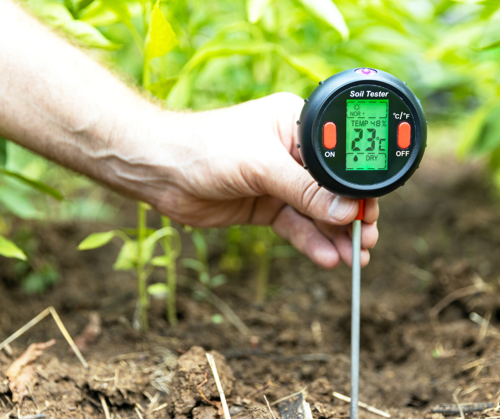
The first step to ensuring your seed is going to thrive is to test the soil. This isn’t a must for all lawns, but if you have struggled to get grass growing in the past, it is a good idea.
You can complete this 3 or 4 weeks before you begin re-seeding with a testing kit.
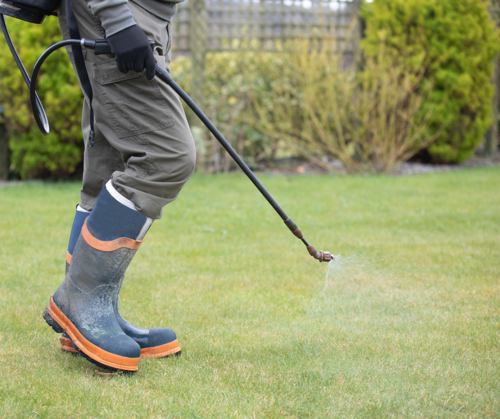
So that your new seed doesn’t have to battle for nutrients, use a weed killer to remove weeds such as dandelions, thistles and dichondra. You can do this safely with a sprayer. Make sure you have protective clothing on such as gloves, eye protection and a mask.
Try to do it when it’s not windy so you don’t come into contact with the product.
If you want to kill off all vegetation to start fresh, NZ Lawn Addicts recommends using a nonselective herbicide. Always wait until the existing vegetation has been killed off before re-seeding, which may take several days.
If you have hard-to-kill weeds such as paspalum, couch or kikuyu, a second dose of weedkiller can be applied before re-seeding.
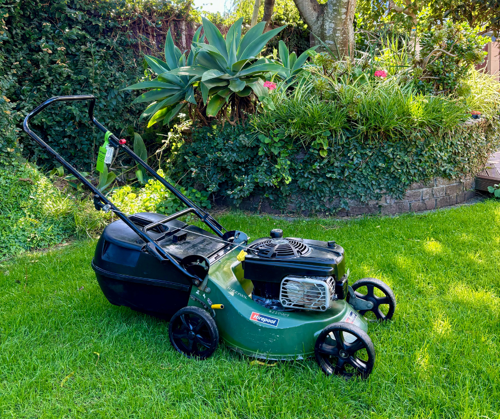
The next step is to mow the lawn down to a length of around 20mm. Rake up all clippings, debris and leaves so you can get a good look at what areas need tending to.
Speed up the job with a mower and leaf blower, and hire a trailer for green waste if you have plenty to dispose of. Larger branches can be tackled at the same time with a chipper.
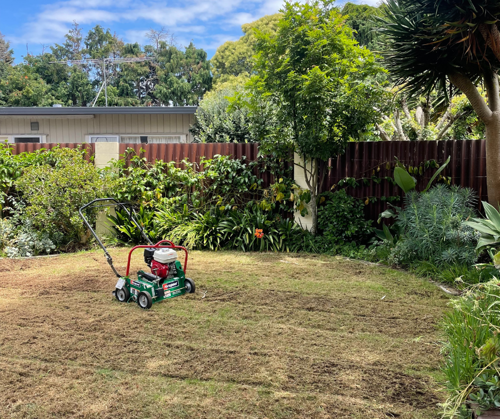
Before sewing grass seed, it’s important to attend to the layer of thatch on your lawn.
Thatch is the layer of roots and stems between your lawn and soil. Keeping the layer of thatch down encourages the right amount of water and nutrients to get into the soil and it helps to prevent lawn diseases. Hire a de-thatcher to complete this job.
NZ Lawn Addicts suggests doing your lawn de-thatching when the temperature is cooler and the ground has some moisture in it. Spring and early Autumn are best.
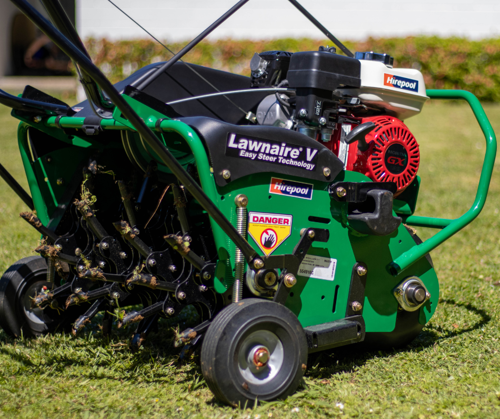
Lawn aerating puts small holes in the lawn which assists with oxygenation, allowing nutrients in, relieving soil compaction and preparing a partial seedbed.
The quickest way to do this is to hire a lawn core Aerator. These are easy to use and are key to helping you achieve even and effective aeration. To complete soil aeration effectively it’s a good idea to do eight to ten passes over the area. Check out our guide on how to use a lawn core aerator for more tips!
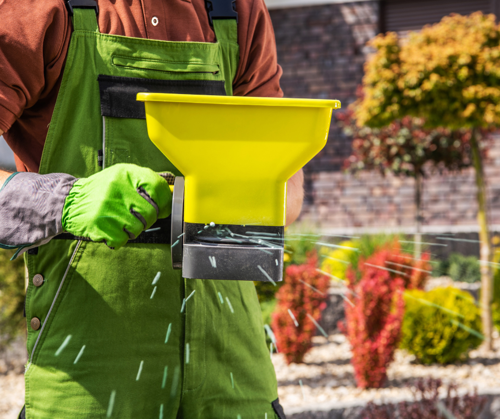
Now is a good time to add any nutrients to your soil, if the soil test showed anything was lacking.
This might include nutrients such as lime, which is a source of calcium that encourages strong plant growth. The adjustment to the ph level of the soil ensures the plant can absorb nutrients. You can do this with a fertiliser spreader to ensure even distribution.
If you are adding nutrients to the soil, and working on a large yard or turf you should ‘drag’ the area to break up cores and amendments into the soil. You can do this with a drag mat for your lawn, or make your own drag mat with a heavy square of chain link fencing.
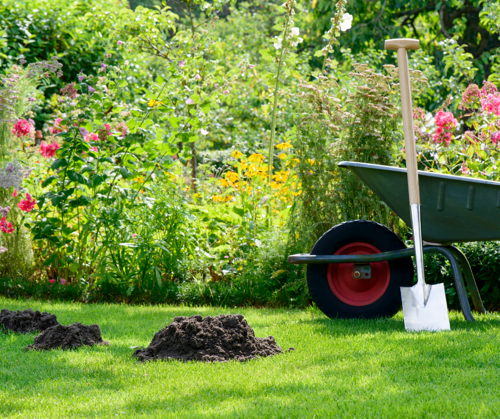
Now that your existing soil has been tended to (or if you are over-seeding), you can add good-quality topsoil to fill in any low spots on the lawn.
To ensure you get an even surface, level it out and drag the lawn to fill in any of the core holes from the previous aeration step.
If you have a lot of low spots to tend to, utilise the option of trailer hire to transport your soil.

To ensure your lawn has enough nitrogen, phosphorus and potassium to establish, use a product such as NZLA starter fertiliser. You can apply this efficiently using a sprayer backpack.
As with weed killer, use protective gear such as gloves, eye protection and a mask.

Now all of the soil preparation is done, you can spread the lawn seed.
It’s important to spread seed evenly, which is done easily with a lawn spreader.
Perennial Rye grass is good for sunny areas
Tall Fescue or a mixture of Fine Fescue and Perennial Rye are good for partial shade to partial open sun
Fine Fescue is best for heavily shaded areas and dry soils
NZ Lawn Addicts recommend sewing half your seed in one direction, then the rest in right angles to the first lot. This helps to ensure you get an even spread.
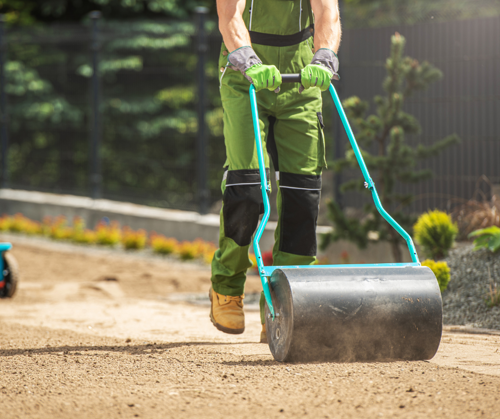
To ensure the seed is sitting securely into the soil, use a lawn roller to press down the seed to ensure the seeds make contact with the soil to encourage germination.
If any of the seeds don’t make contact with the soil, they may blow away or wash away and you will likely end up with a patchy lawn.
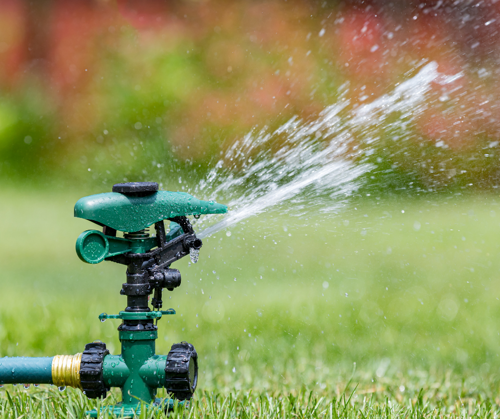
Lightly water the area, being careful to use a fine mist otherwise the seed will move around too much or wash away
Make sure to keep the area moist until germination, to ensure the plans can become well established.

Now that the growing is underway, be sure to keep everyone off the lawn, including kids, pets, and birds if you can manage it!
Complete the first lawn mowing when the new grass is at least 75mm high.
Only mow down far enough to take the tops off so the new grass isn’t damaged, then give it a light water.
Four to six weeks later you can fertilise again, using NZLA All Seasons granular fertiliser and a lawn spreader. You can also use the NZLA Wetter to help with soil moisture retention especially if you are re-seeding before summer.
Now that you’ve got your lawn looking lush, you’ll want to take good care of it!
Part of having a great maintenance schedule is knowing what to do in every season of the year, and what not to do!
Stick to a schedule so you can keep on top of your lawn jobs, which will mean less work in the long run.
There are so many products specially developed for growing and maintaining an impressive lawn, from topsoils to fertilizers, weed killer and of course high-quality grass seed.
Using good quality products will ensure you get off on the right foot and enjoy the best results.
Rather than investing in all the equipment needed to maintain your lawn, hire everything you need from Hirepool to make the job faster and easier with the right kind of gear. Simply hire it for the weekend, then return it when you are done. A bonus to save room in your shed.